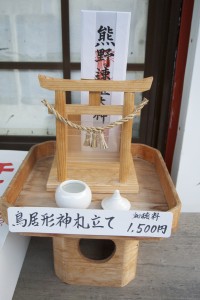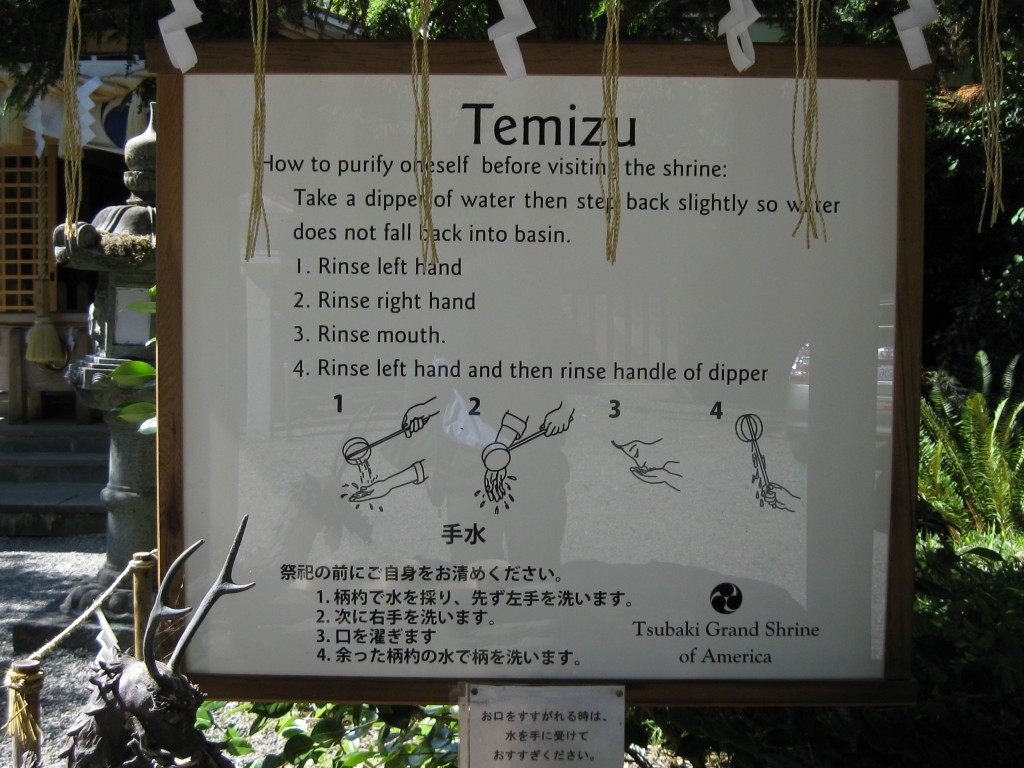The Wikihow pages have an item on ‘How to Follow Shintoism’. Not sure who’s compiled it, though there are seven monikers. Some of the ideas are pretty wacky: learning gagaku or dressing up in white kimono doesn’t seem practical or helpful. Also it might come as a surprise to most Japanese to know that Hanami is a Shinto holy day. The compilers equate Japanese culture and Shinto to the extent that they see people as born into the religion rather than choosing it, which makes their list redundant! Anyway, here’s the list so see what you think for yourself. (For Green Shinto’s guide to Solitary Practice, click here.)
*********************************************************
Steps
1 Research about Shinto. Consider reading the Kojiki. Learn about famous kami such as Izanagi and Susanoo and jinja (shrines) such as Ise and Yasukuni. Also read articles or books written by both western and eastern scholars. You might also want to read up on State Shinto.
2 Learn Japanese. This is not vital, but it would be immensely helpful in following Shinto.
3 Learn how to worship at a Shinto shrine.
4Locate your local Shinto shrine. If you are not in Hawaii or Japan, you might have some difficulty doing this.
5 Consider making a pilgrimage to a Shinto shrine, if you have no local shrine, especially for New Year’s. Often Japanese people go back to their home town for New Year’s, so a Shrine with some connection to your birth or family would be good.

For just Y1500 you can set up your own home altar
6 Celebrate Shinto holy days. Your local shrine will have festivals specifically sacred to their kami, so find out what they are. Common Shinto holy days are Hinamatsuri (Girl’s Day), Hanami (Cherry Blossom Viewing), and of course Shogatsu (New Year’s). If you have no Shinto shrine, consider organizing a celebration to celebrate these days. On New Year’s, make kagami mochi, play karuta, and hang a New Year’s wreath.
7 Obtain a Kamidana. A kamidana is a small home shrine. If you cannot find one, consider setting up a simple sacred place in your home. Remember to worship in front of the kamidana everyday.
8 Consider Amulets. You might also want amulets or other charms to protect you from demons and bring you luck through the year. Omuji are fortunes which include a small charm to keep in your wallet. A hamaya (demonbreaking arrow) will keep bad fortune at bay. You might get a Maneki Neko (Lucky Cat) to encourage wealth and other good fortune to come your way. Or you might want one or more omamori (small brocade amulet) for Kōtsū Anzen (car safety) or Gakugyō Jōju (School Success).
9 Volunteer at your local shrine. Consider trying to help with yard work or cleaning. Becoming involved in the going ons at the shrine will help you deepen your understanding of Shinto. Make friends with the miko (priestess) and kannushi (priests).
10 Learn gagaku. Gagaku is traditional Japanese court music. Consider playing the ryūteki (flute), shō (oboe), or hichiriki (mouth organ). See if your school offers any classes in it.
11 Learn Shinto dances and dress. Shinto dancers often dress in a white kimono, red hakama, with a sheer white coat. Often, a sakaki branch adorned with shide (strips of folded white paper) is used in dances.
12 Study and participate in Japanese culture. Shinto is inseparable from Japanese culture. Learning about one will enhance the other.
Warning: Westerners often consider their religion first, and then their race. However, in Eastern cultures, people tend to consider their race first and their religion second. Often, if a Japanese person moved to America, they would attend the Japanese dominated Pentecostal Church rather the American style Buddhist temple. Thus, some people will say you cannot be Shinto unless you are racially Japanese.

Strangely some instructions for non-Japanese on how to cleanse oneself

Leave a Reply